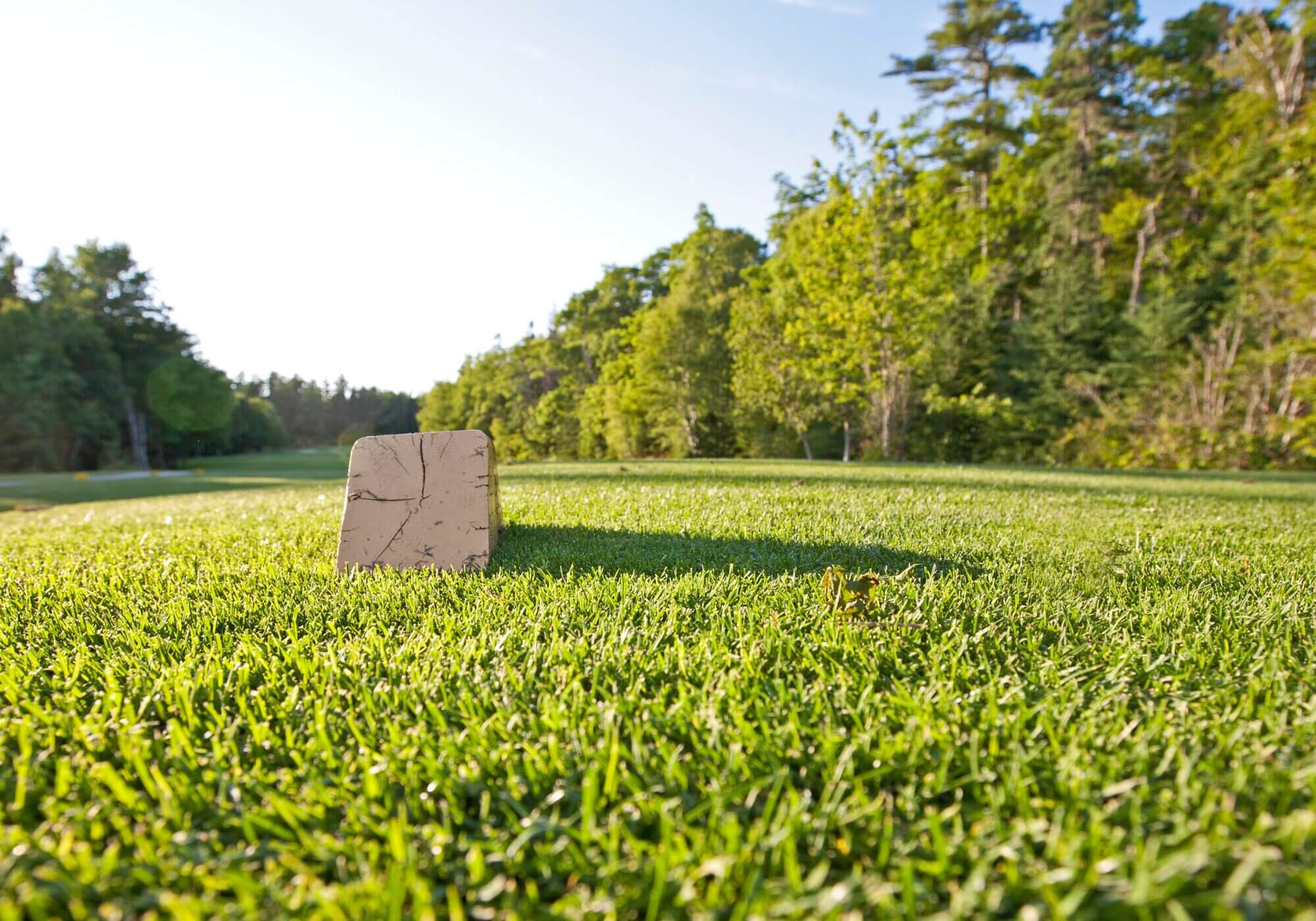Most golfers don’t actually know the teeing area rules. They wing it, make assumptions or follow what they think they remember from years ago.
This creates problems. Slow play. Confusion. Arguments that could be avoided. And penalty strokes that golfers don’t even realize they’re taking.
The teeing area (or tee box as it’s commonly referred to) isn’t just a starting point — it’s a defined area with specific rules that can help or hurt your score. Master these basics and you’ll avoid penalties and know what you’re doing.
The teeing area: Bigger than you think
The teeing area extends two club-lengths back from the tee markers and stretches across the full width between them.
You can tee up your ball anywhere within this rectangle, even if it means standing outside it. Just your ball needs to be inside the boundaries; your feet can be wherever feels comfortable. This gives you options.
Playing into a strong crosswind? Tee up on the side that helps you aim into the wind and let it blow your ball back to center. Trying to work the ball around a tree? Use the full width to create the angle you need. The tee box is your friend if you know how to use it.
Didn’t intend to hit it? No penalty, just re-tee
If your ball falls off the tee before you intend to hit it, there’s no penalty. None. Just put it back on the tee and try again. The same applies if you accidentally hit it while making a practice swing. (This also applies if you make contact with the ball with your practice swing on the putting green. But if it happens anywhere else on the course, it’s a one-stroke penalty and you must replace the ball to its original position.)
However, once you address the ball on the tee with the intention to hit it, swing and make contact (even if you barely graze it and it falls off the tee), that counts as a stroke. The ball is now in play wherever it ends up, even if it’s sitting right next to your feet.
This is why you see pros take their time setting up. They’d rather spend an extra few seconds getting comfortable than risk a mishit that puts them in an awkward spot.

Tee markers are immovable: Don’t even think about it
Tee markers stay put. Period. You can’t move them. Work around it or find another spot in the teeing area.
The two club-length rule: Your safety net
The two club-length area extending back behind the tee markers isn’t just extra space — it’s your backup plan. If the main teeing area is damaged, waterlogged or unplayable, you can tee up anywhere in this extended zone without penalty.
The same rule applies when the tee markers are missing. As long as you’re within two club-lengths of where they should be according to the scorecard, you’re good to go.
Playing from the wrong tees: Know before you go
Playing from the wrong set of tee markers is a two-stroke penalty in stroke play. In match play, your opponent can make you replay the shot from the correct tees. This seems obvious but it happens more than you’d think, especially on courses where tee markers aren’t clearly marked or when groups get mixed up.
Why these rules matter
Like all the Rules of Golf, teeing area rules are intended to keep the game fair.
More importantly, these rules give you options. That extra space behind the markers might save you when you need a comfortable stance. The full width of the teeing area could create the perfect angle for your next shot.
Golf is hard enough without basic rule confusion. Know the teeing area rules and you’ll start every hole with confidence.
The post Golf Tee Box Rules Every Golfer Should Know appeared first on MyGolfSpy.
